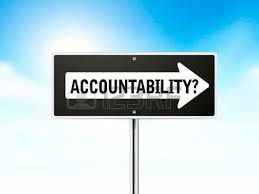How can I be happy when my rules have been violated!
Perspective and Belief
1. Perspective: A 2-step mental process for gathering information about, and assigning meanings to the people, situations, events and circumstances we encounter.
2. The Belief Behind the Victim Perspective: My feelings are the emotional consequences of the hands I'm dealt, the people, situations, events and circumstances in my life.
The Choices We Make Based On Belief
Preferring positive to negative feelings, most of us have established criteria that must be met in order for us to be happy. This is an example of the power of our beliefs; they lead us to take action. Our beliefs form the bases for our perspectives. We use our beliefs when assigning meanings to the people and situations we encounter.
People operating from the victim belief are convinced that the outside factors in their lives cause their feelings. It seems that most of us hold that belief. When we encounter factors that don’t meet our criteria for happiness, we think and act as if the ensuing unhappiness something that those factors did to us. Maybe we should take a closer look at those criteria, our unenforceable rules.
Rules
The criteria we’ve established for our happiness or other positive feelings are what I refer to as our rules. These are the things we have decided must or must not happen in order for us to be happy. People or situations that don't meet our criteria for happiness have violated our rules. I want you to think about this. We have established demands and expectations that must be met in order for us to be happy.
Most of us also have rules about how other people must or must not behave. Have you ever caught yourself thinking that you have every right to expect certain behavior? Are there certain types of behavior you believe you don’t have to put up with? If so, you can be pretty sure you’re talking about one of the rules you’re using to determine how you feel about, and respond to people and their behavior.
The Problems with Our Rules
As I see it there are two major problems associated with our rules:
1. The first problem is the emotional attachments we have to them. Based on the belief that outside factors cause our feelings, we abdicate our roles in creating those feelings.
2. The second problem is that most of our rules apply to factors over which we have absolutely no control.
Unenforceable
Here’s something you can do to grasp the scope of this problem:
Make a list of some of your favorite pet peeves, ones that you encounter often. You may have to think about this to get the process going, but when you hit your stride, you’ll be able to develop a rather lengthy list. And that’s my point. Most of us have long lists of rules, most of which are unenforceable.
I’m not suggesting that the hands we’re dealt don’t matter. What I am suggesting is that by clinging to our rules we sustain our emotional attachment to things over which we have no control. And that is a choice that compounds the negative impact of the inevitable setbacks we’ll encounter.
Preferences
The alternatives to rules are preferences. And upgrading rules to preferences is how we transform emotional victimhood into emotional accountability.
More about Preferences in the next article.
Previous articles in the series can be found HERE








